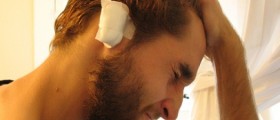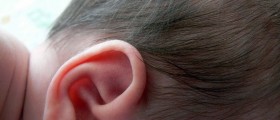
Middle ear infections occur when the eustachian tubes become swollen. A common cold is enough to cause this swelling. The inflammation leads to a blockage and thus the entrapment of fluid in the ear. This type of infection is generally most commonly seen in young children, as a result of narrower ear tubes amongst younger humans.
Symptoms
Unsurprisingly, the most obvious symptom of this problem is earache. This ache can be mild or severe. In some cases, insomnia or fever might be side effects of the infection. There might also be thick, yellow fluid coming out of the ears. This will occur if the eardrum has burst as a result of the infection. It is also possible for fluid to build up without becoming infected. This will lead to a feeling of the ears being ‘plugged’. Hearing difficulties are often symptoms of this.
Treatment
Many infections of this type will heal without treatment. However, it is advisable for antibiotics to be administered to children under two years old, or to those who are at risk of complications. Over the counter medications such as Tylenol can also be used to relieve pain. Additional relief can be provided by holding a warm washcloth of heating pad over the ear. Aspirin should not be taken by those under the age of twenty years old. A doctor might provide ear drops to assist in pain relief.
If surgery is required, this will necessitate the placement of a drainage tube into the eardrum(s). This is quite a common childhood operation, and requires the administration of a general anesthetic. The surgeon will cut a small hole in the eardrum and insert a small plastic tube into the opening. This tube will help to drain and ventilate the middle ear and can also alleviate hearing problems. Tube placement operations such as this are considered for children who have had repeated infections or fluid build up for more than three to four months.
Adenoid or tonsil removal might also be options to consider if the child has suffered repeated ear infections over a period of time. In children under the age of four, tonsil removal is not normally performed. Tubes inserted into the ear usually remain in place for six to twelve months. Upon the tubes falling out, the eardrum will normally heal over a period of around four weeks. It is rare but not unheard of for tubes to cause scarring to the eardrum, and even permanent loss of hearing.

















Your thoughts on this
Loading...